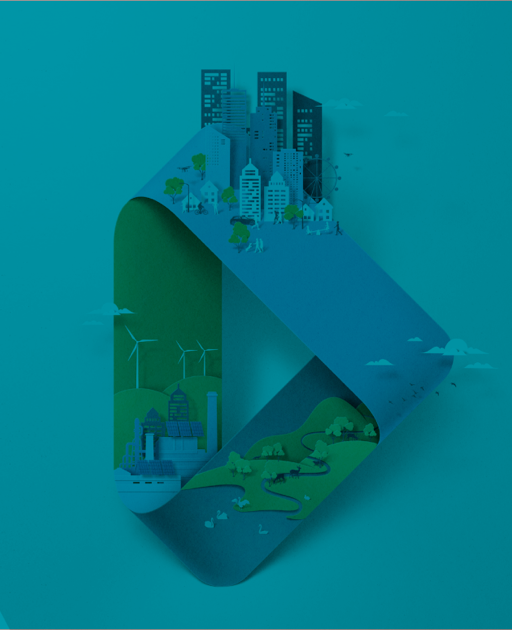This took place on 22 February 2019 and on the initiative of Flanders Circular, OVAM and the Flemish Construction Confederation. More than 300 organizations, ranging from architects, contractors and public and private building owners, over material producers, to researchers and facilitating organizations, signed up.
Strategic challenge
Some 30 to 40 percent of our waste originates from construction. Moreover, the way we build and live has a major impact on our carbon footprint. The Green Deal is aimed at giving a boost to circular building in Flanders.
Doing and learning together are central to this. The more than 300 participants in the Green Deal start experiments (such as carrying out a circular construction project, offering a construction site, carrying out research, developing and offering circular products or services, facilitating circular construction projects, ...) and bring their knowledge and experience together in a learning network.
However, each of these organizations has a different level of knowledge (the extent to which they know the circular principles and success factors) and a different level of experience (the extent to which they have applied a circular strategy in practice) regarding circular building. The circular economy & sustainability team of Möbius was called in to guide the network, lift the participants to a higher level of knowledge and experience and thus gradually make circular building the daily reality in Flanders.
Approach
For two years we facilitated this learning trajectory so that the more than 300 participating organizations from all kinds of sectors together developed a vision and concrete applicable and accessible knowledge about circular building.
How did we get started in this participatory trajectory? With a stakeholder analysis focused on four different elements:
- What types of participants are there?
- What are their objectives in the Green Deal?
- Which circular principles can apply to their functioning?
- What is their level of expertise in circular building today?
The result of this allowed us to design the Green Deal - despite the very large and diverse group of participants - tailor-made for each of them. The participants were continuously questioned about their evolving needs and challenges (at the registration or evaluation of an event, via live polls on (digital) meetings, ...). We used this input from the participants as a guide to optimally adapt the various activities to the needs of the learning network.
What exactly happens in this learning trajectory?
There were two constants throughout the entire trajectory. On the one hand we organised a live meeting four times a year where participants could meet each other. These live meetings evolved from inspiration days in year 1 aimed at providing participants with best practices, to action days in year 2 that served to come together to find solutions to the challenges that circular construction activities bring in practice. The Inspiration and Action Days were implemented in a variety of ways: for example, through plenary sessions with keynotes, presentations of concrete cases, workshops, expert or demonstration markets and site visits. Digital tools, such as a live voting or network app, further increased interaction and ensured that we gathered new ideas or wishes from the participants. It was fantastic, during these days of inspiration and action, to see the increasing dynamics in the learning network: there is cross-pollination between disciplines, participants enthuse each other, partnerships arise in function of concrete building projects, ...
In addition, we maintained an online learning platform where participants could strengthen their knowledge and skills around circular building at their own pace and also share them with other people in their own organization. Gradually we shared publications, teaching packages and webinars that cover the various aspects of a circular building process, ranging from circular design, through selective demolition, to new business models and digitization. To this end, Möbius worked closely with Kamp C as an expert in sustainable building and with, among others, Econocom, which has expertise on circular financing, and VUB, which shares insights on circular design.
By entering the Green Deal Circular Building the participants also engaged themselves to test a circular strategy in practice through a pilot project. During the further course of the learning trajectory, we - together with the team of Flanders Circular, OVAM and the Flemish Construction Confederation - were strongly committed to guiding participants in this process, allowing them to exchange experiences and overcome barriers, and to enter into partnerships.
On the page of Flanders Circular you could follow the trajectory and see the atmosphere of the inspiration and action days. Towards the end of the Green Deal, more content (such as an overview of the pilot projects, the teaching packages, ...) became available to a wide audience here.
Results
Möbius' facilitation led to the creation of an active and committed learning network that gathers, inspires, learns and develops at different times. With our guidance we ensured that we bring together the vision, needs and ideas of all those involved and that these are used in concrete experiments in practice. In this way, all partners together ensure that Flanders can take major steps forward in the transition to a circular construction sector, both in terms of building practices, policy and with a broader social impact.
Möbius itself also signed the commitment of the Green Deal Circular Building. For example, within the 'Bouwen aan een Circulaire Kempen' project we are supporting SMEs in the construction sector to develop a circular business model.





.jpg?width=410&height=220&name=iStock-1407807197%20(1).jpg)